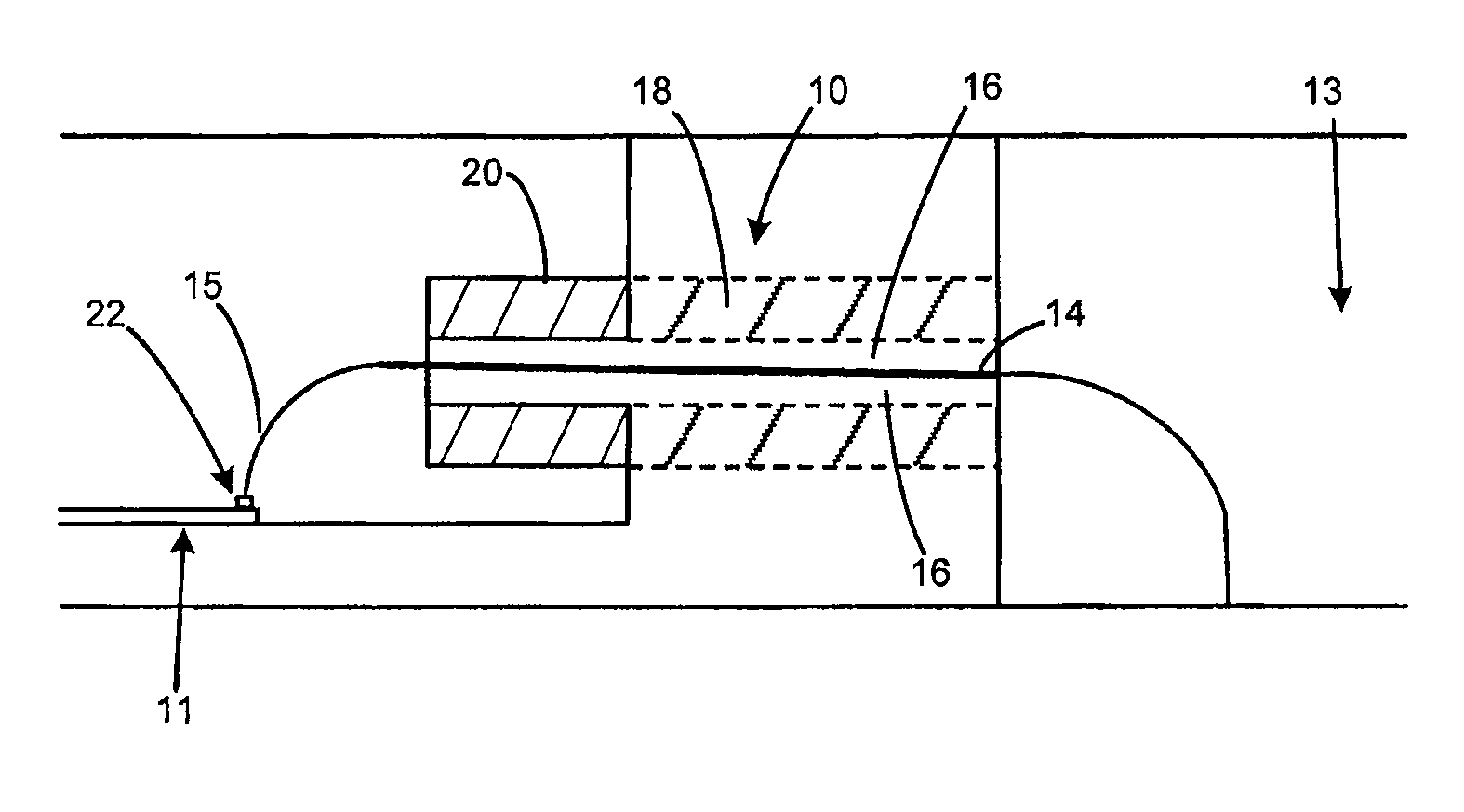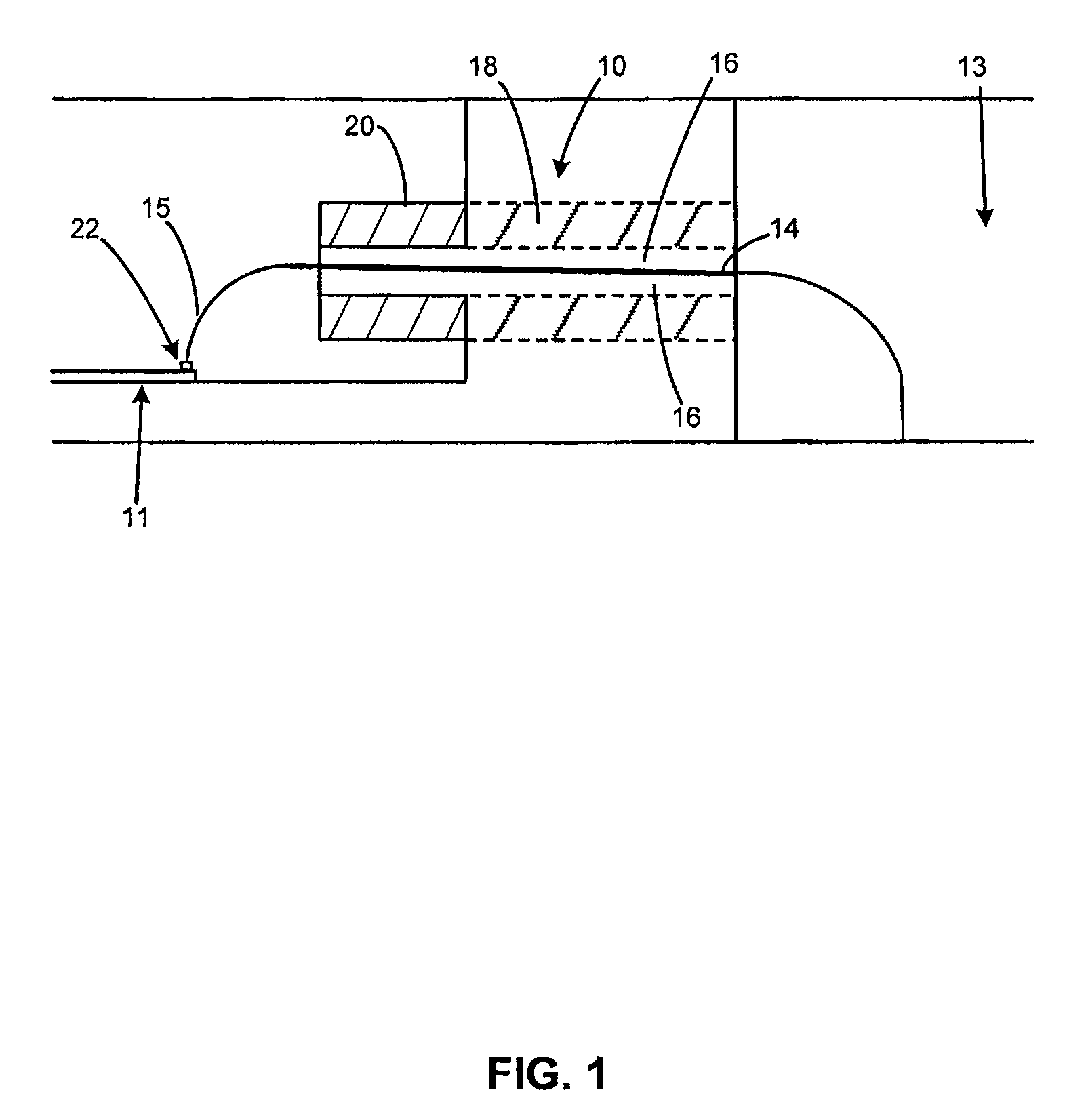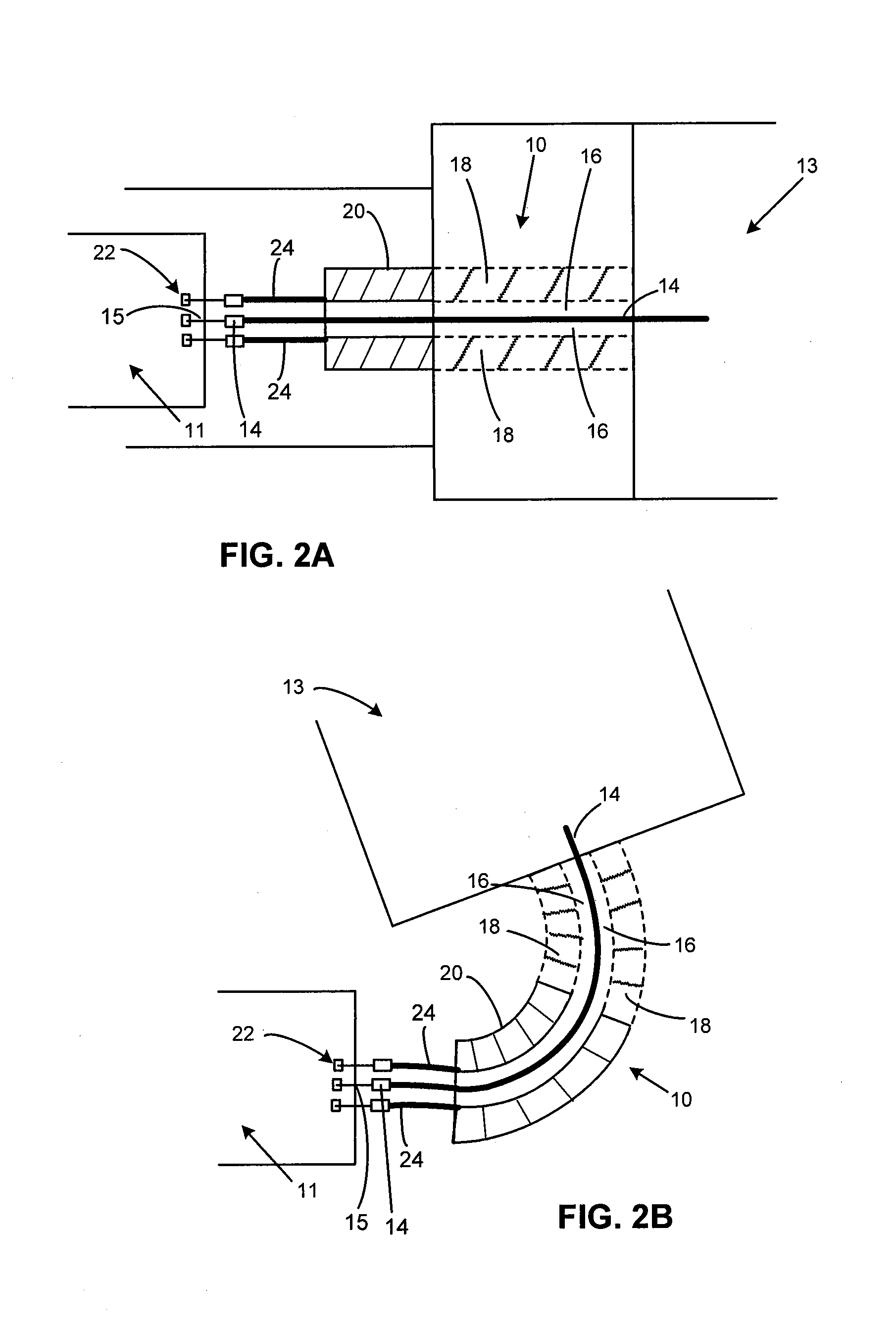Direct coaxial interface for circuits
a coaxial interface and circuit technology, applied in the field of interfaces, can solve the problems of microwave energy being particularly difficult to control, energy waves can be difficult to control on various circuits, and a portion of the signal is lost, so as to reduce loss
- Summary
- Abstract
- Description
- Claims
- Application Information
AI Technical Summary
Benefits of technology
Problems solved by technology
Method used
Image
Examples
Embodiment Construction
[0016]In accordance with one aspect of the present invention, a coaxial interface for connecting a circuit to an energy transmission device such as a waveguide is disclosed. Throughout, the interface will be referred to as coaxial interface 10.
[0017]With reference to FIGS. 1-2A and 2B, and in accordance with an exemplary embodiment of the present invention, coaxial interface 10 is a low-loss interface comprising a coaxial structure that is configured to transmit energy between two devices that it is directly connected or coupled to. It should be noted that the term “low-loss” refers to the ability to reduce signal loss as discussed above. In an exemplary embodiment, coaxial interface 10 connects a circuit 11 to another energy transmission device 13. Furthermore, coaxial interface 10 can be any device with a coaxial structure configured to transmit energy with minimal loss by matching or transforming impedance and modes of energy wave propagation between two or more energy producing ...
PUM
 Login to View More
Login to View More Abstract
Description
Claims
Application Information
 Login to View More
Login to View More - R&D
- Intellectual Property
- Life Sciences
- Materials
- Tech Scout
- Unparalleled Data Quality
- Higher Quality Content
- 60% Fewer Hallucinations
Browse by: Latest US Patents, China's latest patents, Technical Efficacy Thesaurus, Application Domain, Technology Topic, Popular Technical Reports.
© 2025 PatSnap. All rights reserved.Legal|Privacy policy|Modern Slavery Act Transparency Statement|Sitemap|About US| Contact US: help@patsnap.com



